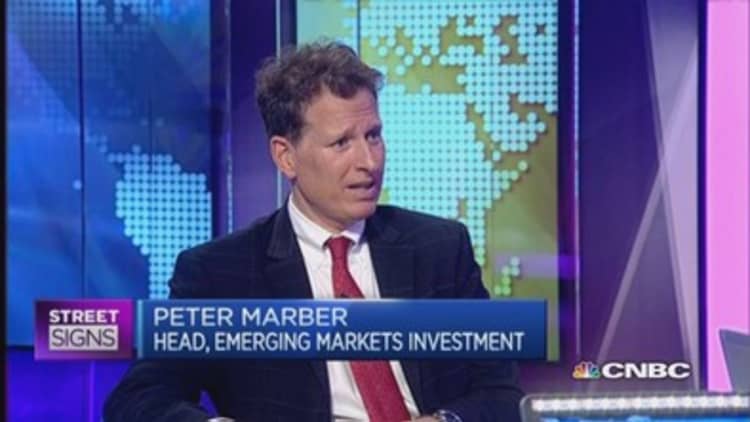Emerging markets are back on investors' buy lists, with expectations any U.S. interest rate hike will be delayed set to spur on the rally, according to strategists.
"The main driver behind the rebound in flows seems to have been clearly dovish signals from the Federal Reserve," said Robin Koepke, an economist at Institute of International Finance (IIF), in a report. Weaker U.S. labor market and activity data has given investors' confidence that "Fed liftoff" isn't likely before September, Koepke said.
Those dovish signals were heightened on Wednesday after the Federal Open Market Committee offered no changes to its zero interest rate policy, pushing back many analysts' expectations for a rate hike to September or December from earlier expectations for June.
In April, portfolio flows to emerging markets (EM) picked up to $35 billion, the strongest since June 2014, with equity markets attracting $21 billion of that, the highest since October 2010, the IIF said.
Read MoreDollar drought poses emerging market risks
It's the latest confirmation of an emerging markets revival. Over the past 30 days, the MSCI Emerging Markets Index has risen around 9 percent, with some markets—such as Brazil, Shanghai, Russia and India—in bull market territory.
But to sustain the rally, markets will need to keep pushing out that first U.S. rate hike way beyond June, said Tim Condon, head of Research for Asia at ING Financial Markets.
Others also expect that the Fed's holding pattern will help emerging markets.

"If the Fed's communication remains in line with market expectations and emerging markets central banks respond appropriately, we believe currency volatility will decline and this will help restore a focus on [EM] fundamentals," Lazard Asset Management said in a recent note.
More tantrums ahead?
To be sure, certain EMs, such as Brazil and South Africa, will likely remain vulnerable to market volatility when a U.S. rate hike does occur, potentially reminiscent of 2013's "taper tantrums," or the market ructions that followed the Fed's announcement it would soon begin tapering asset purchases, Fitch Ratings said on Thursday,
But some don't expect a repeat of taper tantrum-like volatility, citing a "cyclical" market trend.
"Cyclical EM equity markets have massively outperformed defensive ones," Jason Ambrose, CEO of Singapore-based Vanda Securities, said in a note on Wednesday. He noted cyclical markets like Turkey and Brazil have risen 6-7 percent since the start of April, while defensive markets such as Indonesia, the Philippines and Thailand have fallen, with Indonesia suffering a 7 percent loss.
"The fact that cyclicality rather than liftoff may now be driving EM dispersion is a good sign. It means good is good, and also suggests that EMs could avoid a nasty taper-style drawdown this summer," he said.
Others noted that EM stocks are just looking attractive on their valuations.
EM equities are trading at 28 percent discount to their developed markets peers on a price-to-earnings basis, favoring further strength, Lazard highlighted.
"While the gap reflects the macroeconomic and geopolitical risks currently associated with emerging markets exposure, it is also an indication of the strong upside potential of the asset class," Lazard said.

